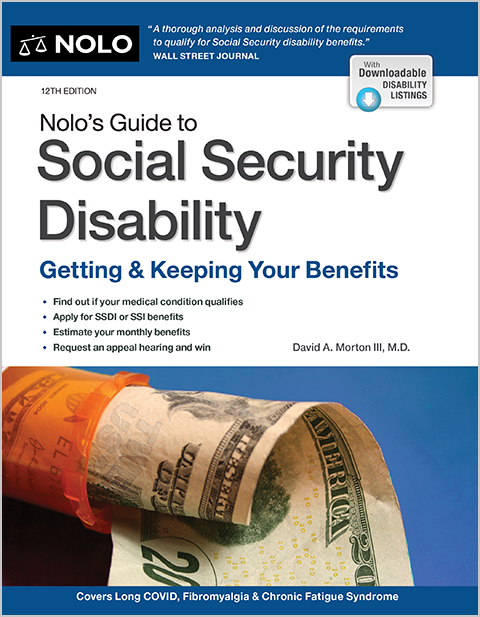Community First Choice offers home health care without the limitations of Medicaid service waiver programs.
Community First Choice (CFC) is a Medicaid program that allows states to offer home and community-based services to Medicaid beneficiaries statewide. (The 2010 Affordable Care Act (ACA) added Section 1915(k) to the Social Security Act, creating the CFC program.)
The CFC programs provide care attendants and support to Medicaid beneficiaries who would otherwise need to live in an institution (like a nursing home). The law doesn't require every state to run a Community First Choice program, but states that do receive increased federal matching funds to help cover the costs of these benefits.
Section 1915(k) requires participating states to allow Medicaid beneficiaries to direct their own care as much as possible. The CFC law says the Medicaid beneficiary should have the authority to interview care attendants, choose the best one, and later fire that person if necessary.
Who Is Eligible for Community First Choice Program Services?
All Community First Choice Medicaid programs are created and run by the participating state governments. Consequently, some of the rules vary from state to state. However, some basic eligibility rules under Section 1915(k) apply to all CFC programs.
You Must Live In a State With a CFC Program
You can't receive Community First Choice services unless you live in a state that has chosen to offer CFC Medicaid benefits. State participation has fluctuated since CFC programs began operation in 2012. As of 2024, eight states offer a Medicaid Community First Choice option:
- California
- Connecticut
- Maryland
- Montana
- New York
- Oregon
- Texas, and
- Washington.
Arkansas, Arizona, and Minnesota once had Medicaid Community First Choice plans but have dropped them in recent years.
You Must Meet Your State's CFC Income Limits
If your state has a CFC program, and you want to receive CFC services, you'll qualify if you meet the Medicaid eligibility requirements in your state. But if your income is too high to qualify for Medicaid, you might still be eligible for CFC services.
You can qualify for most state CFC programs with an income up to 150% of the federal poverty level (FPL). In contrast, the income limit for Medicaid eligibility is 133% of the FPL. In Montana, CFC program services are limited to those who meet the Medicaid income limit. (Learn what these percentages of FPL mean in terms of income.)
Note that some states already have Medicaid income limits that are higher than 150% FPL for certain groups of people who require institutional care. In those states, the higher income limits also apply for CFC services.
You Must Need Institutional-Level Care to Qualify for CFC Services
You must need an "institutional" level of care to qualify for Medicaid Community First Choice services. You meet the institutional-level care requirement if you'd need to live in an institution like a nursing home if you couldn't get the home and community-based services provided by CFC.
Your state will evaluate the level of care you need when you apply for CFC program services.
Participating States Must Offer CFC Program Benefits Statewide
The Social Security Act allows states to target some home and community-based Medicaid services to specific groups of people (for example, Home and Community-Based Services (HCBS) waiver benefits). But Section 1915(k) prohibits states from limiting CFC programs to specific groups of Medicare-eligible people or particular communities.
If you're eligible for Medicaid and you need your state's Community First Choice program services to avoid living in an institution, CFC benefits are available to you regardless of your:
- age
- disability, or
- where you live in the state.
Also, the law doesn't allow your state to cap enrollment (unlike HCBS waivers), so Medicaid Community First Choice services are available to as many qualified people as apply for them.
Services Provided by the Community First Choice Program
Under the CFC program, states are required to provide home and community-based services to Medicaid beneficiaries to enable them to avoid living in an institution, but they have some flexibility about how to do so.
States can use what Medicaid calls an "agency-provider model." With an agency-provider model, Medicaid beneficiaries rely on an agency to help them locate, select, and manage the services they need to stay in their homes.
Alternatively, states can use what Medicaid calls a "self-directed model." In this model, Medicaid beneficiaries are responsible for locating, selecting, and managing their own services.
States can use other models for delivering CFC services as long as they're approved by the Centers for Medicare and Medicaid Services (CMS) first.
States also have some choice in the types of services they offer in their CFC programs. Some services are mandatory, and some are optional.
Mandatory CFC Program Services
In a CFC program, you can get services that help you with activities of daily living (ADLs) and instrumental activities of daily living (IADLs). ADLs are activities that you need to do to be able to live, such as:
- moving from place to place
- using the toilet
- washing, and
- eating.
IADLs are activities that you need to do to be able to live independently, even though they aren't quite as fundamental as ADLs. Some examples of IADLs include:
- housecleaning
- grocery shopping
- preparing meals, and
- managing your money.
CFC programs must offer help with both ADLs and IADLs—depending on your specific needs.
In addition, CFC programs must offer help with health-related tasks like organizing medication and helping you take it, or maintaining medical devices that you need. They must also pay for backup systems to ensure that you always have the care you need, like beepers or medical alert buttons.
One of the goals of the CFC program is to put Medicaid beneficiaries in control of their own care as much as possible. Allowing beneficiaries to choose their own care attendants is essential to the program. To that end, CFC programs must offer you training on how to hire, manage, and fire your attendants.
Optional Community First Choice Services
States can offer additional services in their CFC programs. Optional services could include paying the cost of transitioning out of a nursing home, such as:
- first month's rent
- security deposits
- moving expenses, or
- funds for bedding or kitchen supplies.
State Medicaid CFCs can also pay for services or items you need to increase your independence and decrease your need for a care attendant (like a bus pass or a microwave).
How to Apply for Community First Choice
If you live in a CFC state, contact your local Medicaid office to ask about the application process. You can find your local Medicaid office using the state search tool at Medicaid.gov.
If you don't live in a CFC state, you can still contact your local Medicaid office to find out whether there are any other home and community-based programs for which you might be eligible.


